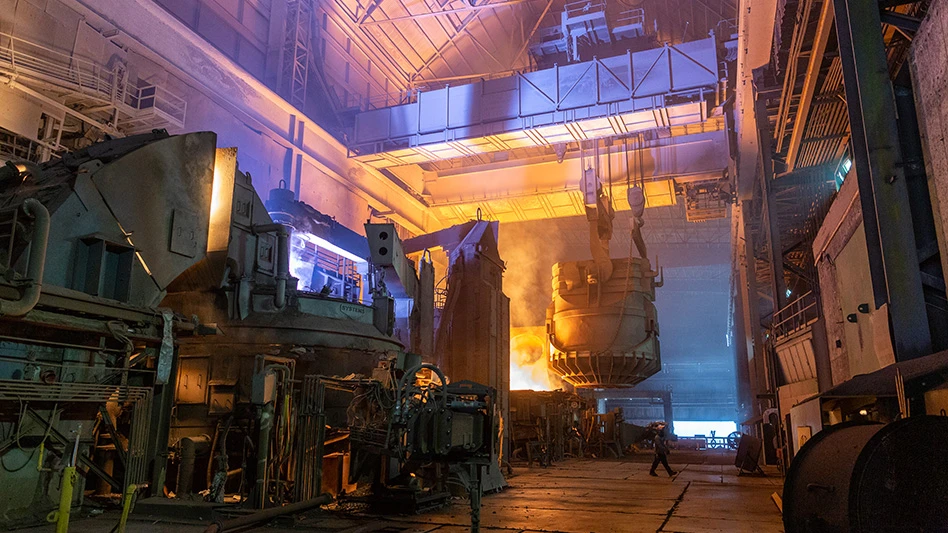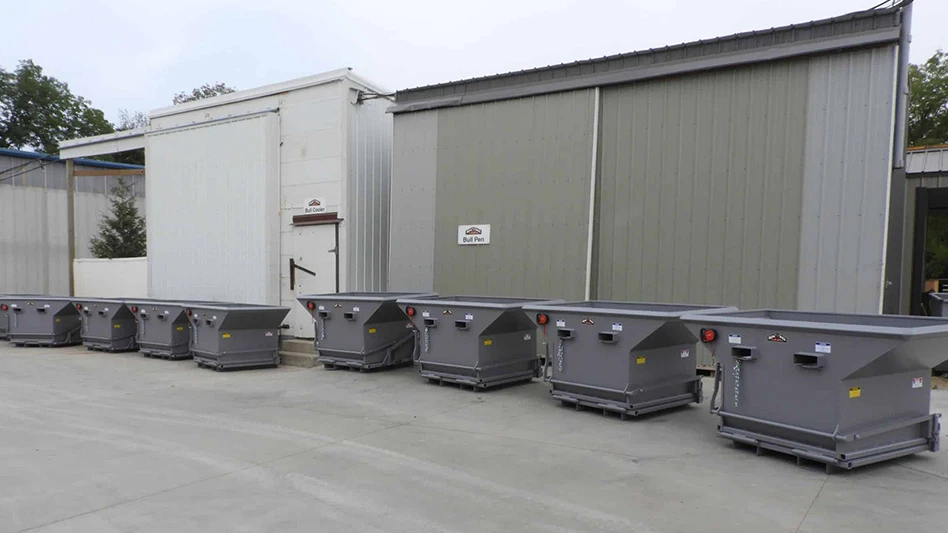
Following a slight drop in September, ferrous scrap pricing experienced a much sharper price drop the October buying period, with the secondary commodity losing up to $60 per ton in value (depending on the grade and region).
Spot market transaction averages calculated by Pittsburgh-based Management Science Associates (MSA) for the Raw Material Data Aggregation Service (RMDAS) show that mill buyers on the spot market bought scrap for from $33 to $61 less per ton in the October buying period, which runs from late September through October 20.
Looking at national averages, shredded scrap lost the most in value, dropping from $398 per ton in September to $344 in October—a $54-per ton decline. Regionally, pricing held steadiest in the North Midwest region (consisting of Illinois, Iowa, Kansas, Minnesota, Missouri, Nebraska, Wisconsin, the Dakotas and the northwest corner of Indiana), where shredded scrap lost $40 in value and No. 1 heavy melting steel (HMS) declined by just $33 per ton in price.
The October and September price drops combined essentially put ferrous scrap prices exactly where they were back in July 2012, right after the market experienced a similar tumble. October 2012 prices for three of the most commonly-traded grades tracked by RMDAS (No. 2 Shredded Scrap, No. 1 HMS and the Prompt Industrial Composite grade) are all within $6 per ton of their July 2012 average price.
On the generation side, a Pennsylvania scrap processor estimates that scrap flows through his properties in September were probably down by some 20 percent in volume compared to the summer months of 2012.
Although he says the demolition and construction sectors did not contribute greatly to his volumes in the summer, what little those sectors did contribute has likely dried up for the next several months.
“In this part of the country my peddler traffic tends to peak in the summer as well, so it’s hard for me to anticipate any kind of volume increase for the rest of 2012,” he comments.
As noted in the October 2012 issue of Recycling Today, more than 300 auto shredding plants are now installed in the United States, with that number having increased from closer to 200 only a decade ago. Conversations with shredder operators indicate that many plants are operating at reduced schedules that can include either fewer hours per day or alternating days during the week (or both).
On the ferrous scrap demand side, domestic steel industry production figures were showing signs of weakness as of mid-October. According to the American Iron & Steel Institute (AISI), in the week ending Oct. 13, 2012, domestic raw steel production was 1.736 million net tons at a capability utilization rate of 70.3 percent.
That is down from a production level of 1.781 million tons in the week ending October 13, 2011, when the capability utilization was 71.9 percent.
That week of Oct. 13, 2012’s production level also marked a 1.2 percent decrease from the previous week (ending Oct. 6, 2012), when production was 1.757 million tons and the capability utilization rate was 71.1 percent.
Also in mid-October, the World Steel Association (Worldsteel), released its outlook for steel consumption for the rest of 2012 and for 2013. Worldsteel forecasts that global apparent steel use will increase by only 2.1 percent in 2012, which it calls “considerably lower than the 6.2 percent growth achieved in 2011.” In 2013, global steel demand is being forecast by the organization to grow by 3.2 percent and to “reach a record high of 1.455 billion metric tons.”
For U.S. scrap processors who export to Turkey (where steel mills supply building products used throughout the Middle East), Worldsteel notes that “recovery of steel demand in the MENA (Middle East and North Africa) region has been slower than expected due to continuing political instability.” However, that export market remains a growing one. “Apparent steel use in the region will still increase by 4.9 percent in 2012 [and] in 2013 the growth rate is expected to accelerate to 6.7 percent,” according to Worldsteel.
Regarding the domestic steelmaking market for ferrous scrap, Worldsteel is not especially optimistic about 2013. “In 2013, steel demand growth will slow to 3.6 percent [and] apparent steel use will reach 135.1 million metric tons in 2013.”
That 3.6 percent growth number for 2013 would follow anticipated healthy steel production growth in North America of 7.5 percent in 2012.
The Raw Material Data Aggregation Service (RMDAS) Ferrous Scrap Price Index is based on data gathered from a statistically significant compilation of verified ferrous scrap purchase transactions.
RMDAS is a service of Management Science Associates Inc. (MSA), Pittsburgh. Those seeking more information about RMDAS can contact MSA’s Jeralyn Brown at 724-265-6574 or via e-mail at JBrown@MSA.com.
Latest from Recycling Today
- Autocar releases Smart Battery Cable to advance refuse truck fire safety
- PLASTICS launches Positives of Plastics website
- Impact Air Systems launches compact ZAC400
- PCA to shut down paper machines at Washington containerboard mill
- BMRA provides landfill guidance for UK shredder operators
- Fornnax high-capacity tire recycling plant
- EU introduces measures to secure raw materials, strengthen economic security
- US Steel to restart Illinois blast furnace





